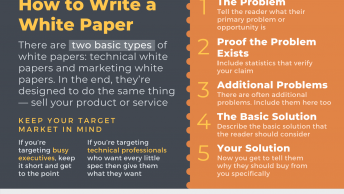
Just how did Apple get so successful and come up with so many new gadgets? How did Steve Jobs take a company that was going nowhere and pass up IBM and the other PC makers? First, you have to know what to steal:
In the PBS Special “The Nerds”, Steve Jobs said:
“Ultimately it comes down to taste. It comes down to trying to expose yourself to the best things that humans have done and then try to bring those things in to what you’re doing.
I mean Picasso had a saying he said good artists copy great artists steal. And we have always been shameless about stealing great ideas and I think part of what made the Macintosh great was that the people working on it were musicians and poets and artists and zoologists and historians who also happened to be the best computer scientists in the world.”
MASTERMINDS BEHIND APPLE’S GADGETS
What really made Apple PCs take off was partnering with Adobe to make Mac “the” machine for desktop publishing. If that had not happened, we might not know about Apple today.
And even after that huge success, they almost killed themselves off by going after the home PC market when they already owned the publishing and business markets AND were smart enough to get Apple computers into the schools.
Whatever students are using WILL eventually become what businesses use
as those students graduate and move into management and tech jobs.
Jobs took credit for the ideas of others, including his own team. In his biography, Jonathan Ive, Apple’s vice president of Industrial Design wrote:
“It hurts when he [Steve Jobs] takes credit for one of my designs.”
Ives did get the recognition though. CNET reported:
“Both Jobs and Ive were named by Fortune as among the smartest people in technology. In giving Jobs top honors among all CEOs, the magazine referred to him as a “visionary, a micromanager, and a showman.”
Naming Ive as the top designer in technology, Fortune credited him as the person who created the iPhone and said that “from the iPod to the iPhone to the iPad, his contributions have set the course not just for Apple but for design more broadly.”
There are many other brilliant inventors behind the many Apple products including:
- Doug Engelbart – patented the mouse while at Standard Research Institute
- Kane Kramer – originated the idea that became the iPod but received nothing from Apple for it
- Jeff Robin and Bill Kincaid, creators of SoundJam
- Greg Hughes whose Wi-Fi Sync idea including his logo were stolen after he submitted them to the iTunes App Store!
- Roger Fidler claims credit for tablet computers
Best Master Programs wanted to give credit where it was due – and so do we – so they created and we are sharing this infographic showing ideas Apple bought, borrowed and stole.
 Infographic courtesy of BestMastersPrograms.org
Infographic courtesy of BestMastersPrograms.org
Unfortunately for inventors, having your ideas stolen and being compensated a tiny amount – or nothing at all – is very common. But if you don’t have the resources to manufacture and market what you invent your “baby” may never get off the ground at all. At least if it is stolen you know you ARE a success. Too bad there is no way to force those who own the system to pay fairly the inventors whose ideas make them fortunes.
INVENTOR RESOURCES:
What do you need to get your inventions off the ground or learn to become an inventor? Find it in these resources for inventing the next generation of technology.














Some of this article is accurate, but some of it is speculation. If you read the Big Book of the History of Computing you will know the truth. You guys have totally forgotten Intel’s role in computing. They were important too for developing their first CPU and motherboard integration. They did this because another company was their supplier and would not co-operate with them. The Graphical User Interface (GUI) was invented at Palo Alto Research Center (PARC) by Xerox. Steve jobs paid them a tidy sum for it, plus Apple stock, and he knew what to do with it. They didn’t. Xerox stayed afloat because of Steve Jobs. Bill gates stole the GUI by claiming he was going to make Office for Mac and other software for the Mac. Steve sued him and ended up settling for 150 million while playing a game of golf. Go watch Pirates of Silicon Valley again.